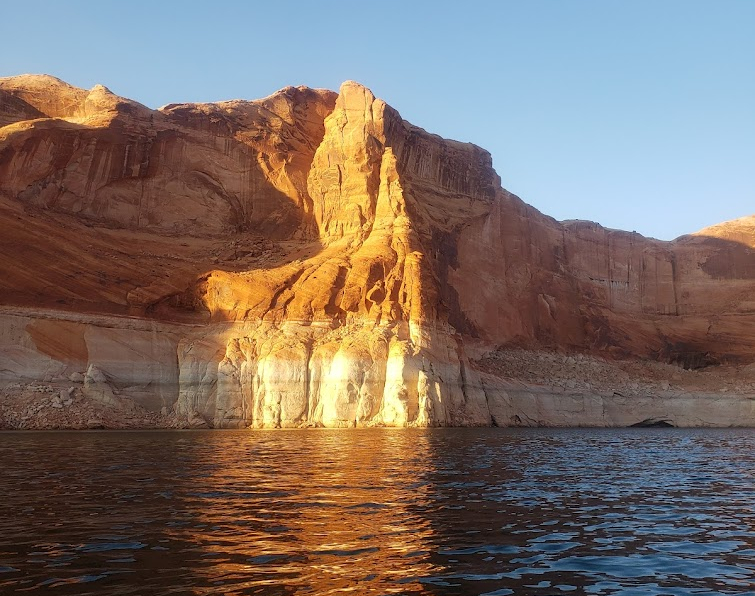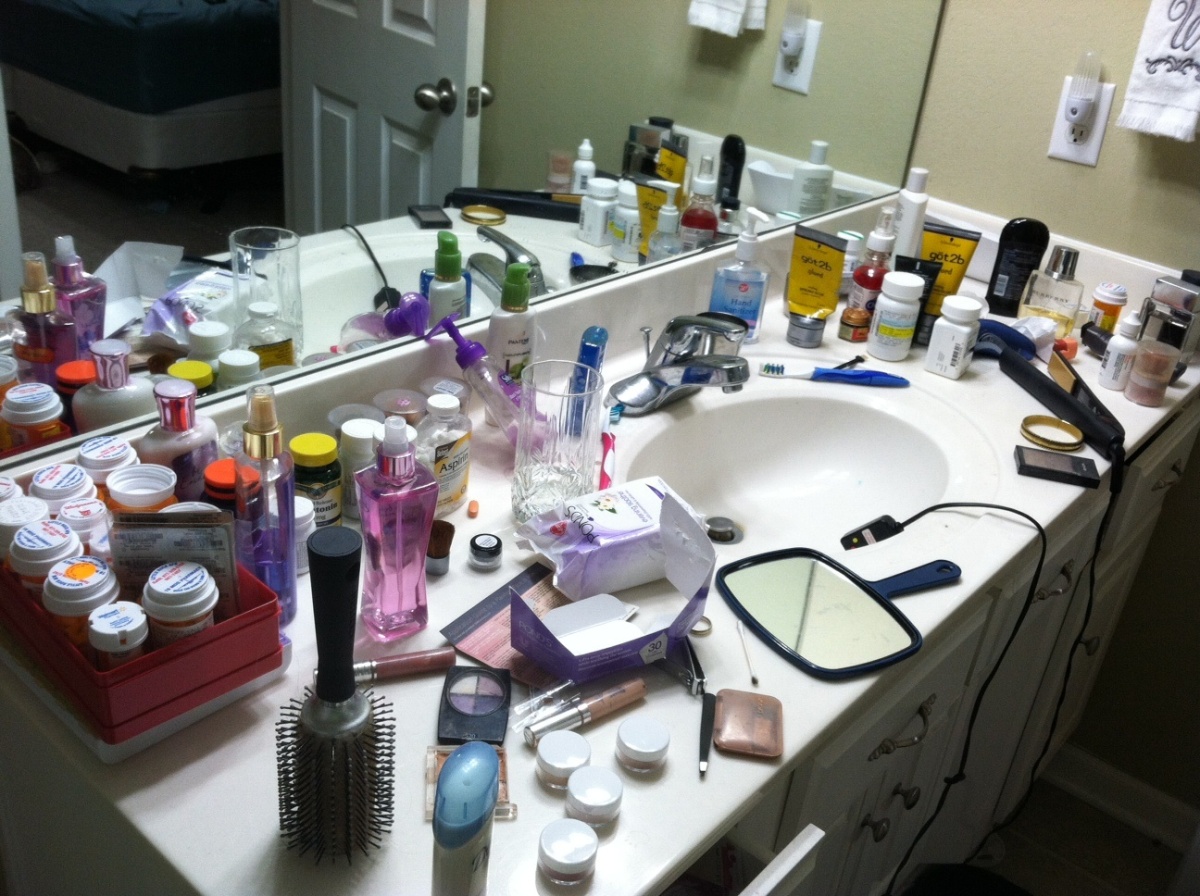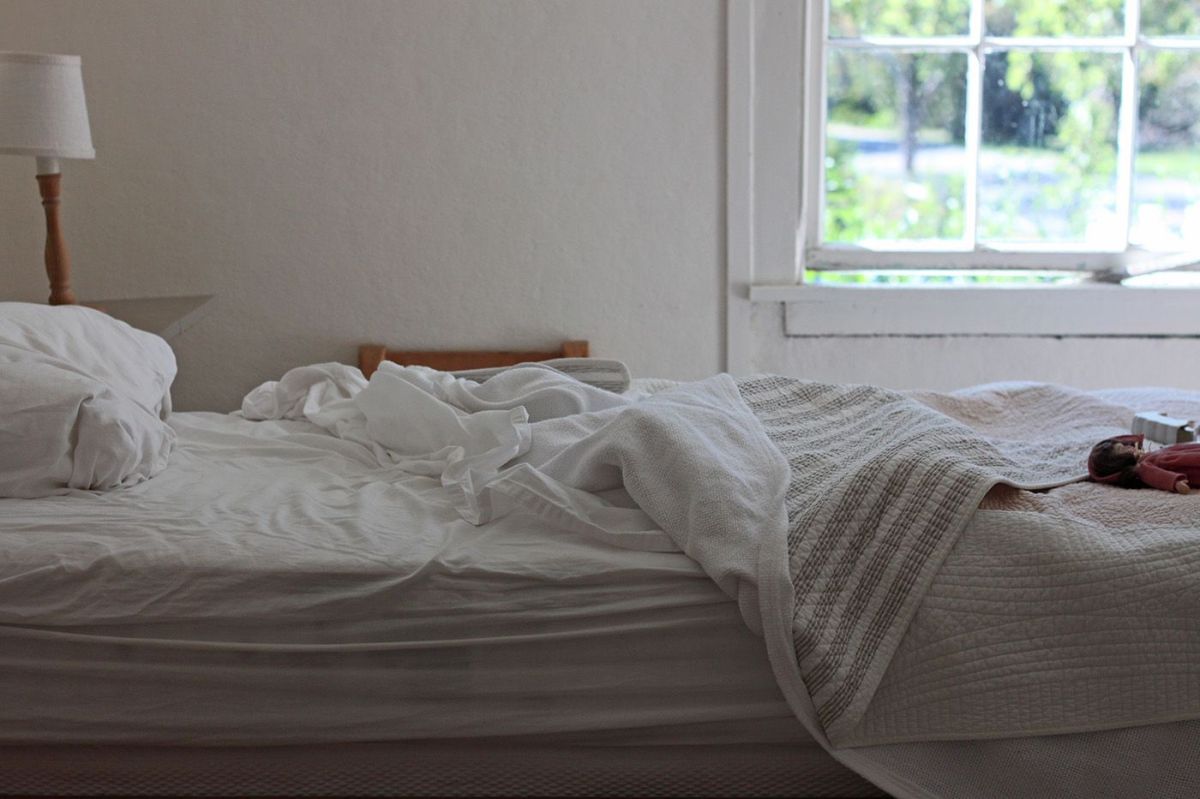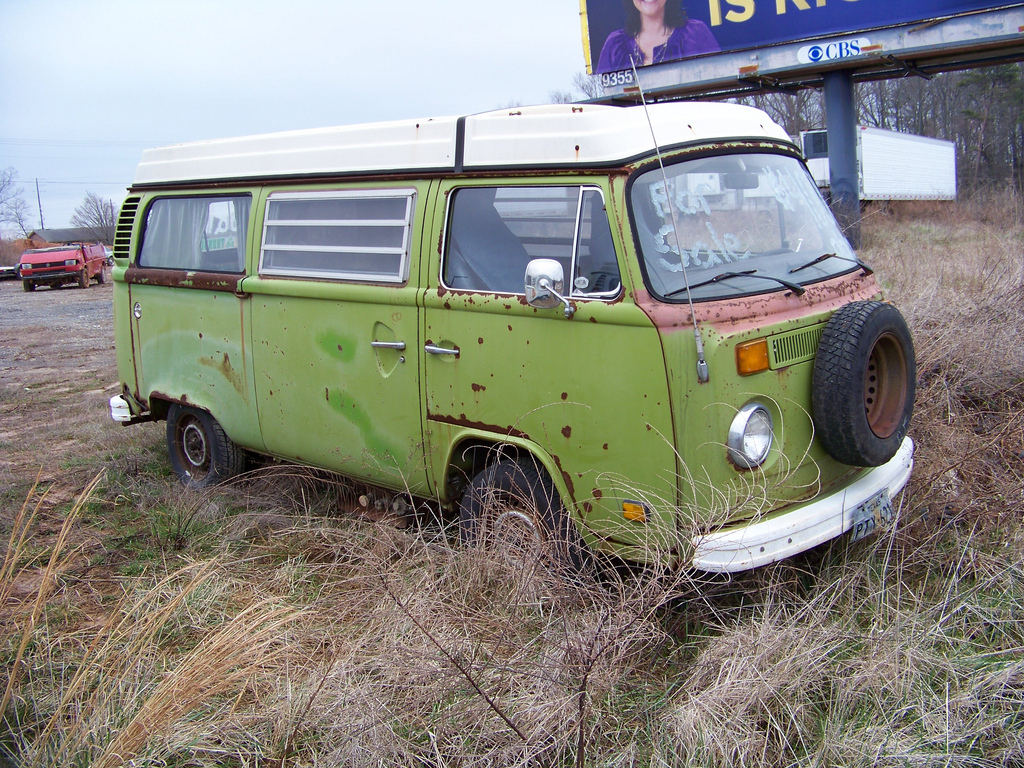My parents have led small, but infinitely interesting lives. This story, 1st Place winner of the Creative Non-fiction category, is just a glimpse into one tiny aspect of their life together.
THE JOURNEY – by Josie Hulme
Car /kahr/ noun
- a road vehicle, typically with four wheels, powered by an internal combustion engine and able to carry a small number of people.
- something that breaks down at the worst possible time.
Most people probably couldn’t come up with more than a bulleted list of cars they’ve owned in their lives, but my parents could write volumes. The cars they’ve owned were many and varied, but they all had one thing in common: they were on their last leg.
The fact that we owned such dilapidated vehicles would not come as a surprise to anyone who knew my parents. When I was five, my parents moved from Salt Lake to a tiny, rather run-down house in a tiny farming community about twenty minutes outside the tiny town of Preston, Idaho. My father was first a teacher, then a principal in the Preston School District. He was, and still is, the ultimate do-it-yourselfer. It wasn’t long before books began to arrive at our new house, books with ominous titles like: Plumbing and Household Sanitation filled with diagrams Escher would have been proud of, and Build Your Own Log Home – It’s Easy! published by Pants on Fire, LLC. And build it, we did!
My mother stayed home to raise seven children. She was, and still is, a modern-day pioneer—that fascinating blend of dreamy-eyed optimism and grounded practicality. She ran her own chainsaw and worked side-by-side with my father while mothering all of us. My mom could whip up a full dinner out of a bare cupboard in thirty minutes flat. Her motto was: “Fix it up, wear it out, make it do, or do without.” We did plenty of each.
We lived too far from town to get a TV signal, so our days were unencumbered by screen time and advertisements for things we couldn’t possibly afford. We stopped at the Preston Carnegie Library every time we went to town, played Kick the Can and Capture the Flag once a week with the neighbor kids, and made up games like Cape-rithians and The Green Pajama. Though I experienced youthful angst like every child, I recognized, even then, the privileged life I was living. While my friends were chafing to move away to the “big” city of Logan, UT, I knew that the halcyon days of my youth—roaming the mountains and splashing in the creek that wandered through our property—were numbered.
This extrasensory perception by my young self might be why, even as a teenager, I was never embarrassed to be picked up by whatever vehicular monstrosity my parents were driving at the time. This did not hold true for everyone who had to catch a ride from us. My mother’s youth group requested she park around the block when picking them up from school so they wouldn’t be seen climbing into the yellowish, rusty Suburban we affectionately named Mahana, you ugly!
My parents’ first car of their married life was indicative of their vehicles for the next thirty years. It was an old, gray Toyota, and it was all downhill from there—literally. The Toyota had a low battery and had to be parked facing downhill so it could be started by popping the clutch. Luckily, their Salt Lake apartment was on a hill. My mother would turn the key to start, push in the clutch, put the car in second gear, and let off the brake to start it rolling down the hill. As soon as the car hit 10 mph, she’d pop the clutch and the engine would roar to life, thus bypassing the battery. Of course, if the next ten seconds weren’t finessed perfectly, the car would stall and the whole process would have to be repeated. Errands had to be planned carefully—stores were chosen not because of price or selection, but geography.
Next came a pink Studebaker with a hole rusted through the floor so you could literally watch the road go by. You wanted to keep a good, tight grip on anything of value while riding in that car—dropped pens, ChapStick or loose change would be sucked into this black hole, never to be seen again.
After that came a red Datsun with a fuel filter problem. My father taught my mother a temporary fix if it ever stopped on her, which it inevitably did—on the dusty shoulder of I-15. My pregnant mother had to lift the hood, unhook the fuel line, and blow the obstruction back into the tank where, if she was very lucky, it would stay until my father was driving.
In Idaho, we had an old mint green Ford truck, the big heavy kind made of solid steel that could take on a M1 Abrams tank and come out ahead. It had a million tiny rust spots that made it look like a robin’s egg. I was fascinated by this machine. I traced the raised F-O-R-D on the back of the tailgate countless times with my little fingers.
It was built in simpler times when there were no locks on the doors, and vehicle-specific keys were a thing of the future. The only reason for a key was to have something long enough to stick in the ignition switch to turn it. When the key was lost, a red-handled flat-head screwdriver found a permanent home in the steering column. Problem solved. That wasn’t the only issue, though. The truck lived up to its name: Fix Or Repair Daily. I swear my father spent so much time under that hood, he started out clean-shaven and finished up looking like Hagrid.
Running, the truck was so noisy that it was impossible to carry on a conversation over the hammering of its engine, and the long gear shift would rattle and vibrate in my cupped hands. But when it was parked, it was a source of endless hours of fun. Its corrugated bed was perfect for Matchbox car races or playing King of the World. Its cab was a great place to hole up during Hide and Seek, and its dashboard, covered in large buttons and gauges, turned the truck into an instant submarine or the Millennium Falcon.
We lived in a boxy, silver trailer for a whole summer one year while we worked on the house. The trailer had about a hundred little doors inside and outside, all of them full of treasures and surprises. There was one big bed that my parents slept in, and canvas hammocks that you could unroll, like WWII stretchers, for us kids. There was a little table that popped up and down, benches that doubled as kitchen chairs and couches, and a tiny galley with a fridge, stove and sink. But best of all, just outside the silver door, there was a whole mountain to explore!
We owned not one, but two Volkswagen buses—at the same time! One was a gift from my great-grandmother who had bought it to go camping. When she became too sick to use it, she sent it on to our large family. No one can remember why we had a second one, but the only possible explanation is that it was a gift from someone else—no one who owned one VW bus would ever voluntarily buy second.
One bus had a too-true-to-be-funny bumper sticker that said “0-55 in 11 minutes.” The key broke off in the ignition in the other one, so my father rewired it to start with a light switch. When it started having other problems, my mother insisted on taking it in to a professional this time. The mechanic spent an hour scratching his head over it before admitting defeat. “Take it to whoever put the light switch in,” he said. “That guy seems to know what he’s doing.” My mother drove home with gritted teeth and a stomach full of humble pie.
One of the buses was so noisy my junior high math class could hear it coming down the block. Math took a back seat to snickers and good-humored ribbing as the staccato bark of the bus grew louder. A peek out the window to see my mother pull into the school’s parking lot confirmed I wouldn’t have to take the big yellow school bus home that day—I would get a different kind of bus ride instead.
Not only were the buses slow and loud, but they were freezing in the winter and sweltering in the summer. I remember peeling my bare legs off the vinyl seats on hot days and hearing the same seat crackle when I sat down in the cold. One snowy day, after the ten-minute drive to church, my mother tried to lift my little sister out of the bus, but she wouldn’t budge. My mother tugged until my sister popped free, leaving behind one shiny black Sunday shoe iced to the floor.
To solve the freezing problem, we were bundled into quilts and blankets, but it still wasn’t enough. So my parents put a 5-gallon propane heater in the back of the bus with us. Now, instead of driving an ice cube, my parents were driving a bomb. The windows wept and fogged up so badly you needed a squeegee to see where you were going, but there were no more little feet frozen to the floor. We eventually sold both of them in a “buy one – get one free” deal.
Somewhere in those thirty years one of my uncles gave us an El Camino—someone’s ingenious combination of a sedan and a pick-up truck. It was a blue-gray bullet that seemed to sway and sail down the winding canyon road. We were also the recipient of “The Dollar Car”—a neon orange sports car that passed to someone in need for the price of a dollar with the agreement that when it was no longer needed, it would be passed on to someone else for only one dollar. The agreement would never have been violated—only someone in dire straits would ever drive such a hideous car.
Several vans followed in quick succession, including a green one named the Pickle. It had mismatched hub caps, flaking rust spots and a luggage rack we strapped the “burrito” to. The burrito was what we called the tarp-wrapped load of there-are-nine-of-us-in-a-seven-passenger-van-and-we-can’t-fit-everything-in-the-car stuff we took with us whenever we traveled.
We drove to LA to see Phantom of the Opera one year. At the time, we were driving a white van with faux wood paneling in a wide stripe on each side, Dodge’s attempt to tap into the non-existent nostalgia for the 70s. We took the middle row of seats out, laid some foam pads down in the empty space, and piled into the van for the road trip. In LA, we drove up to the theater amidst limos and shiny black town cars. Our battered and rattling travel-stained van stood out like a nun in a whorehouse. But I guess our Idaho license plate was explanation enough.
That was not the first time the words to the Sesame Street song, “One of these things is not like the others,” would be applicable to our cars, nor would it be the last. Not sure which car the folks left at the airport for you? Look for the only dump in the parking lot. Can’t remember where you parked at the grocery store? Follow the oil slick. Wondering when you’ll be picked up from a friend’s house? Listen for Chitty Chitty Bang Bang.
My parents bought used cars exclusively from individual sellers. My mother always said that you don’t buy the car, you buy the seller. If you like the person selling the car, then you can trust that they’re telling the truth about what’s wrong with the car (and there was always something wrong with the car). When she bought Mahana, the yellow-brown Suburban, the ad in the newspaper said, “198? Chevy. Rusty but trusty.” And it absolutely was. That thing would not quit, no matter how much some of us wanted it to.
Buying cars is a hazardous crap shoot at the best of times, but when you’re young, it’s even worse. My sixteen-year-old sister wanted to buy a car. She scanned the ads, found one within her price range, and went down for a test drive. It was a cute little two-door Dodge Colt—and it had a sun roof, a symbol of wealth unheard of in our family. The seller wanted $650, but my sister was determined to strike a bargain. If she could knock the price down, she could buy a cute outfit to go along with her new car. She practiced her offer a thousand times in her head before she made the call. But what came out was not what she had rehearsed: “I’ll give you $600 and not a penny less!” It is one of those lines that lives on in family lore, but my sister made the deal, and the Colt had a new owner. To my sister’s absolute horror, on the way home from buying the car, the sun roof blew off and shattered on the road.
Living in a farming community in a narrow valley, it’s no surprise that we had our fair share of run-ins with the local wildlife. We hit a deer with a little black Jetta and had to straighten the hood by hooking it to a rope, tying the rope to a tree, and then backing up the car. We also had several late-night encounters with cows. Idaho is an Open Range state, meaning that if you don’t want other people’s livestock on your land, you need to fence your property—a fence-out, rather than fence-in policy. So when my dad zipped around a corner and ran into a black, 2,000-pound bull standing in the middle of the highway on a dark, moonless night, he was not only responsible for the damage done to his car, but he also had to pay the owner of the 2,000-pound bull for the loss of the animal.
Most of these cars came suddenly into our lives and left just as quickly. We put a lot of miles on them. Simply running into town for a gallon of milk ticked up the odometer forty miles. The nearest Walmart or Home Depot was a 90-mile round trip. If you wanted to watch a movie, go clothes shopping, or eat anywhere other than the deli counter at the Willow-Way gas station, you had to drive at least an hour into Logan. Add in the fact that the nearest relatives lived in Ogden or Salt Lake, that music lessons were taught at USU, that the dentist was in Bountiful, and that the nine of us were always off on some adventure, and you can see it’s no wonder these vehicles had such a short shelf-life.
But there was one car that was a constant: a little white 4-door Honda Accord. It was a workhorse! It hauled coal and firewood to keep us warm in the winter, trays of bedding plants for our garden, lumber to build our home, and loads of teenagers. It bumped over rutted trails in the Cache National Forest above our house, rolled down gravel roads on the way to the reservoir, and sped along thousands of miles of pavement. A neighbor spilled a quart of honey on the back seat that never really washed out, and my youngest sister was almost born in the passenger seat.
As the farthest house up the canyon, we were always getting called by the neighbor kids for rides. The Honda was usually full when we headed into town for youth activities, school dances, or ball games. We drove the Honda through the early-morning dark to help neighbors move pipe in dewy fields of wheat. We drove it to the community BBQ on the 4th of July, to church softball games in the summer, and to night games on the weekends. We hauled saws, nail guns, compressors, and all manner of tools in its spacious trunk down the road to help with construction projects. It kept us safe through near-misses with deer and multiple slides off snowy roads.
All seven of us kids learned how to drive in the Honda. My father believed in starting us right out in a stick-shift. We lurched around the yard, killing the engine over and over again, as we tried to figure out how to work both feet and both hands at the same time. My father was the soul of patience while teaching us to drive. He was so patient, he still wasn’t yelling at me after we sat through several revolutions of the sole traffic light in Preston. I was mortified. Every time I let out the clutch, I killed the engine. The policeman who finally rolled up was a lot less patient, but at least it wasn’t me he yelled at. He took one look at my tear-stained face and told my father, in no uncertain terms, that Main Street was not the place a man should teach his daughter how to drive a stick. My father sheepishly switched seats with me and drove us home.
By the end of its life, the Honda had over 470,000 miles on it. We couldn’t bear to see such a dear friend sitting neglected and forlorn in some acre-long line of anonymous cars in a pick-a-part yard. Not the Honda. So we arranged one last hunt for the old dog and sold it to a neighbor boy who wanted a car for the demolition derby. It churned its way through the mud of the arena, taking down opponent after opponent until it was the last car, wheezing and rattling its way through the cheers of the crowd, dying as it had lived, reliable to the last.
Of course, once the kids moved out and there weren’t seven extra mouths to feed, my parents could afford nice cars—cars with satellite radios, flawless paint and no personality. Sure, they don’t break down on the side of the road or leave a trail of oil you can follow home if you get lost, but where is the excitement in that? My parents have joined the boring millions with functional automobiles rather than adventurous vehicles.
And sadly, so have I. My children will simply have a bulleted list of cars they rode in when they were young. Cars that drove them safely to Disneyland and San Francisco and Seattle. Cars with DVD players so they didn’t even have to talk to their siblings or play the alphabet game seventeen hundred times during the long hours of the road trip. The stories they tell their children will be of the destination and not the journey.
But no matter how pleasant and blessedly quiet these road trips have been for me and my husband, I can’t help thinking I’m doing a disservice to my children. I have taken the path well-traveled. Despite the discomfort of frigid winters and sweltering summers, rattling mufflers and clanking engines, cracked seats and paint jobs that looked bad twenty years before my parents bought the car, I was given a gift. My parents, in their infinite wisdom, saw a blessing in their penury and gave me something that I, in my plenty, have kept from my children: the effort of the climb, the achievement of the odyssey. The thrill of the journey.





